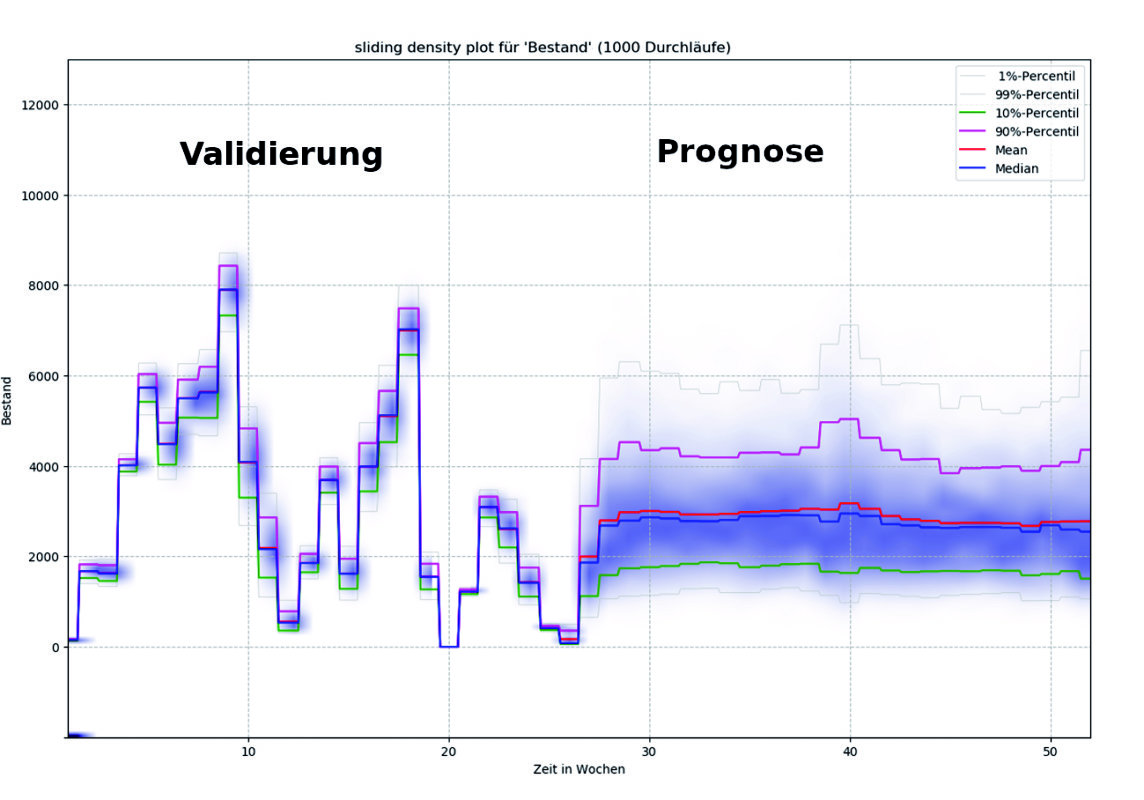WWho would not like to have a double who would take over for tedious occasions, such as a visit to the doctor's or a long car journey? This concept is – luckily! – possible only in science-fiction films. The situation looks rather different for the learning of practical experience. Here, the use of a digital twin of a real object has long been customary - a student pilot, for example, gains initial practical experience not in a real aircraft, but instead, of course, in a simulator.
What is a digital twin?
A digital twin is a virtual depiction of a process. This is based essentially on a computer program trained to collect all possible process data, in order to generate a simulation using artificial intelligence (AI) and software analysis. The greater the input, in the form of data, the more accurate the forecast. In the case of Dillinger's rolling mill, the digital logistics twin will in future act as a tool to support decision-making not only in production, but also in marketing and strategic planning.
Continuous process optimisation
The demanding task for Dillinger's rolling mill consists of process integration of a continuously and rapidly growing range of products and the associated ever rising quality requirements. This means: increasingly greater depths of production and more complex routing of the plates in the rolling mill and in the quenching and tempering shop. Using the digital twin, Dillinger will be able to further optimise its highly individual range of production – which is already notable for a highly diverse mix of products and high throughputs.
The virtual double
The task in production planning is to control cost-efficiently the large selection of working stations which, for their part, are connected by a most diverse range of handling and conveying equipment. For the "digital logistics twin" project, all existing production operations and their interdependencies with one another will be depicted in a mathematical model consisting of data and algorithms. In addition to the operating times on the particular machines, the available storage spaces, dependencies resulting from handling and conveying and other characteristics data, which occur at the respective stations as a result of differing product types, will be taken into account.
The digital logistics twin is thus the digital representation of rolling-mill logistics and connects the real with the virtual world. It can be used in advance to analyse the cost-efficiency of any order or to specify the sequence in which defined orders can best be factored into the production process. Identification of possible production bottlenecks thus becomes possible. In future, strategic investment decisions can therefore be based on the digital logistics twin.
All these potentials will make it an important tool for the support of decision-making, not only in production but also in marketing and management.
The development of the "digital logistics twin" began in 2017. The basis was provided by the production data gathered within the rolling mill in the context of the Industry 4.0 initiative. In an initial stage, it was used to define an efficient product mix. The second stage now follows. Here, wider-ranging projects for process optimisation in the rolling mill, for consideration of investment decisions and for direct linking of production and marketing, are to be initiated.
Stock forecasting

Descriptive analytics

The technological development of sensors and network technologies today makes it possible to interlink physical plants with digital models. The integration of planning, live and historical data means that the logistical processes in the rolling mill at the Dillingen location can be reflected in the digital model. Potential problems, such as bottlenecks and excess planning, can then be easily analysed and eliminated. In addition, the effects of certain production-relevant decisions – such as the construction of new facilities, for example – can thus be examined without any incurrence of investment costs, and therefore without risk.
This means that the use of simulation tools which go beyond the levels of "diagnostic analytics" (Why did something happen?) and "predictive analytics" (What will happen?) to answer, using "prescriptive analytics", the question of: What should we do?
The first digital twin was developed, by the way, by NASA. The US space agency employed this technology for the total replication of early space capsules, which were used on the ground for the simulation and diagnosis of problems encountered in orbit.
Aktien-Gesellschaft der Dillinger Hüttenwerke, Werkstraße 1, 66763 Dillingen/Saar, Telefon: +49 6831 47 0, Telefax: +49 6831 47 2212, Sitz: Dillingen/Saar, Registergericht: Amtsgericht Saarbrücken HRB 23001, Vorsitzender des Aufsichtsrats: Reinhard Störmer, Vorstand: Stefan Rauber (Vors.), Joerg Disteldorf, Daniël Nicolaas van der Hout, Dr. Peter Maagh, Markus Lauer, Jonathan Weber
Imprint
Privacy policy
Copyright © 2016 Dillinger. All rights reserved.
Imprint
Privacy policy
Copyright © 2016 Dillinger. All rights reserved.



